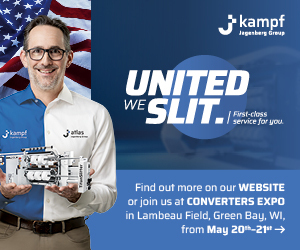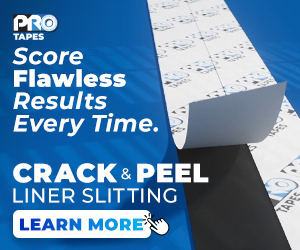Flexible Stand-up Bags for Cat Litter: Discovering the Sustainability Benefits
- Published: September 01, 2018
 The Flexible Packaging Association (FPA) recently published a new report, A Holistic View of the Role of Flexible Packaging in a Sustainable World, which highlights the sustainability benefits of flexible packaging. FPA commissioned PTIS, LLC to provide a holistic view on the sustainability benefits that flexible packaging offers; provide foresight into future sustainability implications for flexible packaging; and develop six Life Cycle Assessment (LCA) case studies comparing flexible packaging to other packaging formats across a range of products.
The Flexible Packaging Association (FPA) recently published a new report, A Holistic View of the Role of Flexible Packaging in a Sustainable World, which highlights the sustainability benefits of flexible packaging. FPA commissioned PTIS, LLC to provide a holistic view on the sustainability benefits that flexible packaging offers; provide foresight into future sustainability implications for flexible packaging; and develop six Life Cycle Assessment (LCA) case studies comparing flexible packaging to other packaging formats across a range of products.
The LCA case studies were developed using the EcoImpact-COMPASS® LCA software, which allows for quick life cycle comparisons between different package formats. The case studies include packaging for baby food, cat litter, ground coffee, laundry detergent pods, motor oil, and single serve juice-flavored beverages. The results from the case studies show that flexible packaging has preferable environmental attributes for carbon impact, fossil fuel usage, water usage, product-to-package ratio, as well as the amount of material going to the landfill when compared to other package formats.
Over the past couple of months, several of case studies were explored in detail, and in continuation, the cat litter LCA case study is highlighted for this month.
Cat Litter Packaging Evaluation Comparison
Cat litter is extensively used by cat owners and is sold in a variety of formats and is a fairly heavy product that requires strong packaging. Cat litter is also moisture sensitive, meaning that if it gets wet or moist from humidity, the product will clump. Therefore, any litter packaging must consider a moisture barrier to ensure the product meets the consumer’s needs when the product is opened.
For this LCA case study, the popular package formats that were evaluated include a flexible stand-up bag — 15 lbs. (6.80 kg); a barrier carton — 15 lbs. (6.80 kg); and a rigid pail with a handle — 12 lbs. (5.44 kg).
Fossil Fuel Consumption Comparison
The flexible stand-up bag uses considerably less fossil fuel in manufacturing than the carton (+70%), and significantly less than the rigid pail (+1429%). This is driven largely by the rigid pail requiring 11 times as much material as the flexible stand-up bag (682g versus 60g). The higher fossil fuel consumption for the carton is largely due to the energy needed in the papermaking process and higher material by weight (557g versus 60g). Thus, largely through its weight advantage, the flexible stand-up bag comes ahead of the other packaging types in fossil fuel consumption.
Greenhouse Gas Emissions Comparison
When looking at the greenhouse gas emissions (GHG) of the three packaging formats, the flexible stand-up bag is preferable, by a wide margin, over the carton (+331%) and rigid pail (+996%). The carton and rigid pail use considerably more material by weight than the flexible stand-up bag, which correlates to both packages having greater GHG impact during the manufacturing stage. Additionally, the injection molding process, which the rigid pail uses, requires more energy than carton production and film lamination.
One unique factor with the carton is that it appears to have a negative GHG impact in the material processing stage. This is due to a carbon “credit” for the carbon sink/sequestration that occurs as a tree grows. The EcoImpact-COMPASS® software considers biogenic carbon (emissions of burning biomass for electricity) and designates as carbon negative, explaining why the material impact remains negative, even with the processing of the wood into the paper-based structures.
The end of life impact is substantial for the carton as well because as a composite structure (paperboard with a film layer on top), it is assumed that the entire package will end up as municipal solid waste. Paperboard without the film layer is typically recycled at a higher rate, but due to the moisture barrier needed for cat litter, a film layer is added, which makes recycling much more difficult. This is calculated as a burden and an emission of GHG. The other package formats have an end of life impact as well, but the flexible stand-up bag is smaller due to the significant reduction in material used which ends up as solid waste. The rigid pail end of life impact is also reduced as there are some benefits calculated from recycling or waste to energy recovery.
Water Consumption Comparison
Paper manufacturing requires a sizeable amount of water in the paper forming process. Water is added to wood fibers to create a slurry of fibers, and then is removed once the fibers are optimally aligned to create the paper sheet used in packaging. All of this results in a higher water consumption rate (+3573%) versus the flexible stand-up bag.
The rigid pail also has a larger water footprint than the flexible bag (+1370%), largely due to the amount of water used to cool the molds used in the production of the plastic pails. Water is flushed into the molds to quickly cool the molten plastic and increase production speeds.
Thus, the flexible stand-up bag has a significant advantage in water consumption versus the other two formats.
End of Use Summary
The flexible stand-up bag offers a hefty product-to-package ratio of over 99%. To successfully deliver cat litter product to a consumer with the required moisture barrier and strength properties, the package is only 1% by weight of what sits on the shelf with product inside. The other formats result in the package weighing 7.5% for the carton and 11% for the rigid pail.
None of the package formats are currently recycled in any large amount. The paperboard carton is not typically recycled due to the film lamination to the board, which is necessary to provide the appropriate moisture barrier. The flexible stand-up bag results in about nine times less material to landfill than the carton, and over 12 times less material by weight than the rigid pail, even considering the recycling rate of the pail. The pail and lid would need to achieve a recycling rate of over 90% from today’s 11% to have the same weight of material sent to landfill as the flexible stand-up bag.
Summary
The results of the data when comparing the different cat litter packaging options shows that the flexible stand-up bag has several significant benefits (fossil fuel usage, carbon impact, water consumption, and municipal solid waste) over the rigid pail and barrier carton, even when taking the current recycling rate of the rigid container into consideration.
While many multi-layer flexible materials are not yet recovered and recycled in any sizeable amount, they still significantly reduce the amount of material sent to landfill versus other package types. The other package formats in this case study would need a massive increase in recycling rates in order to match the current levels of municipal solid waste enabled through flexible packaging.
 For More Information
For More Information
The report, A Holistic View of the Role of Flexible Packaging in a Sustainable World, is publicly available and can be downloaded by visiting the FPA website, www.flexpack.org, and going to the FPA Publications List in the “Library” section. For more information, contact FPA at fpa@flexpack.org or 410-694-0800.
Notes
A normalized product weight (common value divisible by all package formats) of 2720 kg of product was used for Fossil Fuel, GHG and Water Consumption calculations.
All percentages cited are for other formats compared to the stand-up flexible
A higher number for product-to-package ratio (first number) cited means a higher percentage of weight is attributed to product, and less to packaging, resulting in more efficient use of packaging resources.











